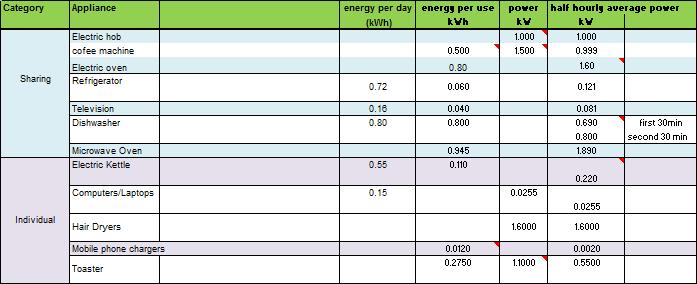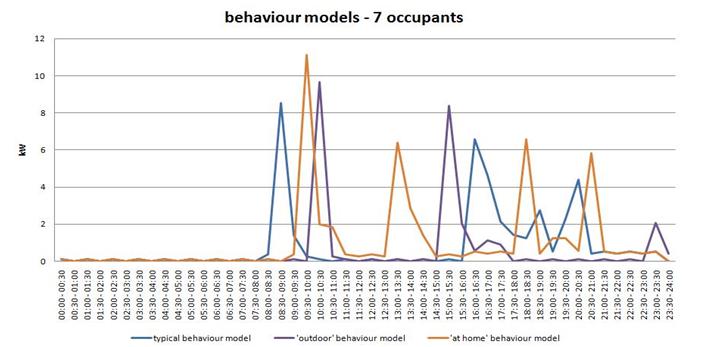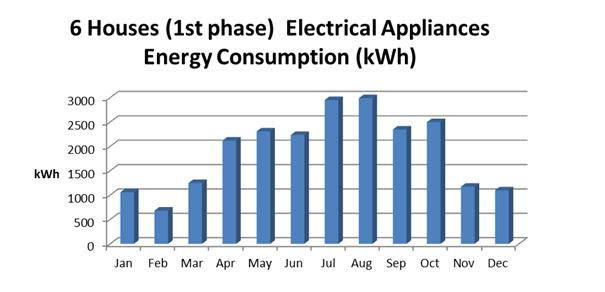
Project Overview
Construction
Occupancy
Behavioural models
Demand
Renewable technologies
Conclusion
Team
Acknowledgements
Demand
Electricity Demand
In order to create electricity profile, the approach followed is shown in the next diagram:
1. First of all, it should be mentioned that each house includes the following appliances:
- electric hob
- oven
- microwave oven
- fridge
- television
- dishwasher
- kettle
- hair dryer
- lights
- toaster
- coffee machine
as well as mobile chargers and laptops which occupants can bring with them.
These appliances were categorised into two groups accordingly to whether they are relatively insensitive to the number of occupants in the house (sharing devices) or not (individual devices). Sharing ones are appliances such as oven, microwave oven, hob, fridge, television, coffee machine, dishwasher and lights, while individual appliances were considered to be a kettle, a toaster, laptops, mobile chargers and a hair dryer.
Moreover, it should be added that we have not included any washing machine or clothes dryer in houses for the following reasons. Firstly, people on holidays tend to take enough clothes for all days of their vaccations. Secondly, clothes dryers consume a huge amount of energy, whereas clothes could be dried naturally. Hence, it is suggested that a common laundry could be built for the site instead of having these two appliances in each house. In that way, electricity demand can be managed in some extend.
2. Subsequently, the load for each appliance had to be found. For the fridge and the television we have been based on EU Directions to estimate the annual consumption and then the load for the 30min step load profile. For the rest of appliances, the load has been found from other sources which one could see at the references section. In the spreadsheet used, one can modify the energy level of the fridge or the size and energy level of television. More specifically, in our case, an A+ refrigerator has been selected, an A level dishwasher and oven, an A+ TV set with hard disk and 8 CFL light bulbs of 20W.
In the following table, one can see the loads for each device, and more particularly, the half-hourly scaled power used for the creation of a 30min timetable.

3. Then, taking into consideration the behaviour models (see Behaviour models section), 30min timetables for each behaviour were generated; in other words, a daily profile for each behaviour model as shown in the following graph.

For more details about the electricity profiles, you can press here
4. Finally, by applying the occupancy profile the annual Electricity Demand Profile, which will be part of the final demand profile, was formed.
The following graph illustrates the monthly electrical appliances consumption for the mentioned 3-2-1 combination.

The total monthly electrical appliances energy consumption for the 6 houses would be 22,701.78 kWh, and hence the average consumption per house would be 3783.63 kWh.
